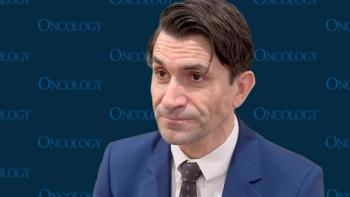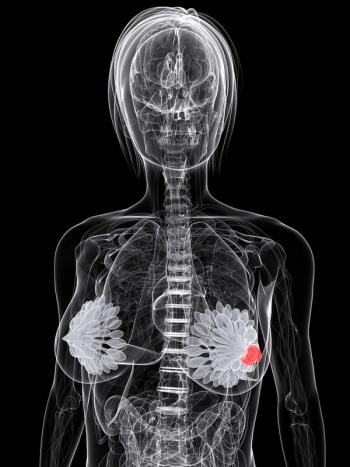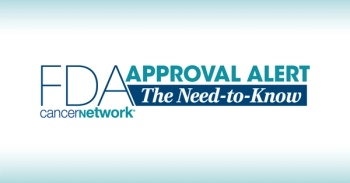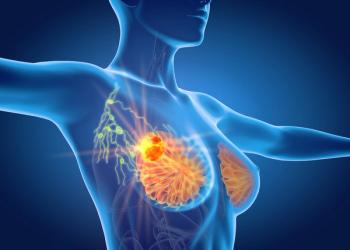
Surgical Risk Appears to Be Unaffected by Neoadjuvant Chemotherapy Use in Thoracic Esophageal Cancer
Patient's surgical risk for potentially resectable advanced thoracic esophageal cancer is not negatively impacted by neoadjuvant chemotherapy, study finds.
Perioperative complication risk in patients with potentially resectable advanced thoracic esophageal cancer did not appear to be adversely affected when neoadjuvant chemotherapy was used. These results from the phase 3 JCOG 1109 trial were presented at the 2021 Gastrointestinal Cancers Symposium.
Moreover, neoadjuvant chemotherapy regimens of docetaxel, cisplatin, and 5-FU (fluorouracil) (DCF) and radiation with cisplatin and 5-FU (CF-RT) did not increase the risk of postoperative complications when compared with CF alone in these patients.
The 3-arm JCOG 1109 trial is evaluating the overall survival benefit of DCF and CF-RT compared with standard CF as preoperative therapy in patients with thoracic esophageal cancer. The primary analysis for the trial is planned for 2023. This analysis focused on the impact on perioperative complications and risk factors for these complications with the 3 neoadjuvant regimens as the impact of preoperative therapy for esophageal cancer has not been fully investigated yet.
The trial enrolled patients with histologically proven squamous cell carcinoma, adenosquamous carcinoma, or basaloid carcinoma who had lesions in the thoracic esophagus. Patients also had to be between 20 and 75 years of age and have an ECOG performance status of 0 or 1. No prior therapy for cancer except for resection was allowed.
A total of 601 patients with clinical stage IB/II/III thoracic esophageal cancer were randomized equally to one of the 3 arms to receive neoadjuvant chemotherapy prior to transthoracic esophagectomy with regional lymphadenectomy. Following chemotherapy, 546 patients went on to surgery.
In the control arm (arm A), patients received cisplatin 80 mg/m2 on day 1 plus 5-FU at 800 mg/m2 on days 1 to 5 of the 3-week cycle for 2 cycles. Patients in arm B received cisplatin 70 mg/m2 on day 1, 5-FU 700 mg/m2 on days 1 to 5, and docetaxel 70 mg/m2 on day 1 every 3 weeks for 3 cycles. Arm C received cisplatin 75 mg/m2 on day 1 with 5-FU 1000 mg/m2 days 1 through 4 every 4 weeks for 2 cycles in addition to radiation therapy at a total of 41.4 Gy.
Surgery consisted of total or subtotal thoracic esophagectomy and regional lymphadenectomy; transhiatal esophagectomy was not allowed but thoracoscopic esophagectomy and D2 or greater lymphadenectomy was allowed.
Of the patients who went on to undergo surgery, baseline characteristics were well balanced between the 3 neoadjuvant treatment arms. The median age of patients was 65 years (range, 30-75), the majority of patients were male, had an ECOG performance status of 0, had tumors in the middle of the esophagus, and had cT3 and stage III disease.
The approach to surgery and the time of surgery did not differ significantly between arms, nor did the extent of lymph node dissection nor residual tumor. The number of harvested lymph nodes, however, was significantly lower in the CF-RT arm.
The incidence of postoperative complications did not significantly increase with DCF or CF-RT. The rate of grade 3/4 pneumonia was 7.6% in arm A, 5.5% in arm B, and 6.2% in arm C. Grade 3/4 leakage was observed in 3.2% in arm A, 6.6% in arm B, and 7.3% in arm C. The rate of recurrent laryngeal nerve paralysis (RLNP) was 3.2%, 1.6%, and 1.7% in arms A, B, and C, respectively.
Perioperative complications were observed in 1 patient in the CF arm, 3 in the DCF arm, and 3 in the CF-RT arm.
Postoperative complications of any kind and of grade 2 or higher in severity were observed more in the CF arm (56.2%) compared with the DCF arm (43.7%; P = .02) and compared with the CF-RT arm (47.8%; P = .11).
There was a significant difference, though, in the frequency of chylothorax in the investigational arms compared with the control CF arm (1.1%, 3.8%, and 5.1% for arms A, B, and C, respectively).
Presenter Kazuo Koyanagi, MD, PhD, of the National Cancer Center, Department of Gastrointestinal Oncology, Esophageal Surgery Division in Tokyo, Japan, noted that while the reason for the decrease in harvested lymph nodes and the increase in chylothorax in the CF-RT arm is unclear, the tissue fibrosis resulting from radiation therapy could be a possible reason for these effects.
Independent risk factors correlating with the incidence of grade 2 or higher postoperative complications by multivariate analysis included tumor location in the middle (risk ratio, 0.79; P = .03) or upper part (risk ratio, 0.86; P = .24) of the esophagus. Additional factors included neoadjuvant therapy approach, with a risk ratio of 0.79 (P = .02) with DCF and 0.86 (P = .12) with CF-RT, thoracoscopic surgical approach (risk ratio, 0.77; P = .002), and operation time of more than 492 minutes (risk ratio, 1.26; P = .008).
“From these results we could at least say preoperative DCF or CF-RT didn’t increase the risk of postoperative complications,” Koyanagi said.
Surgical approach and extension of lymph node dissection did not differ as a result of the 3 neoadjuvant treatment regimens, nor did the rate of intra-hospital death. Preoperative chemotherapy with the DCF and CF-RT regimens were not associated with radicality or short-term outcomes.
The risk of postoperative complications was not increased with DCF or CF-RT when compared with standard CF for patients with esophageal cancer. A decrease in risk was observed with neoadjuvant DCF chemotherapy, but whether or not this is reflective of an improvement in prognosis will require further investigation. “Reduction of the risk for postoperative complications would be expected to improve the curability of surgery in the DCF group,” Koyanagi noted.
Reference:
Koyanagi K, Kato K, Ito Y, et al. Impact of preoperative therapy for locally advanced thoracic esophageal cancer on the risk of perioperative complications: Results from multicenter phase III trial JCOG 1109. J Clin Oncol. 2021;39(suppl 3):162.
Newsletter
Stay up to date on recent advances in the multidisciplinary approach to cancer.

















































































